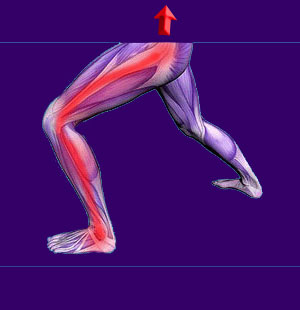
Back pain from fallen arches may exist due to postural changes, gait alteration or increased impact shock that radiates up the spine, caused by normal ambulation. Fallen arches, also known as flat feet, describes a very common foot condition that affects a significant percentage of the general population. Flat feet are usually the result of congenital abnormality, but can also be developed due to several specific causative processes.
Many doctors have been explaining that abnormalities of the feet can cause wide-ranging problems in the body, much in the same manner as NUCCA chiropractic specialists insist that virtually all health issues are the direct result of misalignments of the uppermost 2 levels of the spine. However, not everyone can be right in every case when completely contrasting viewpoints exist regarding the source of back pain. Therefore, debate continues to rage regarding the objectivity of such theories linking dorsalgia to anatomical atypicalities that exist far away from the spine itself.
This essay takes a close look at the arguments for and against the idea of fallen arches being a direct cause and contributor to back pain. We will provide scientific evidence to support both sides of the argument and help patients to make up their own minds about the validity of such causative theories of pain.
Back Pain from Fallen Arches Expressions
Typically, fallen arch back pain symptoms are experienced in the lower back, buttocks and legs, being a combination of lumbar dorsalgia and sciatica. Many patients might also suffer specific pain in their joints, such as the ankle, knee or hip. Less commonly, patients might express neck pain and least commonly of all, upper or middle back pain. Pain might be due to muscular issues, such as chronic tension, imbalances in antagonistic pairings and other causes. Pain might also be present due to neurological compression incited by changes in spinal alignment and tilting.
Many patients experience fatigue in the back, buttocks, hips, knees and legs in association with long periods of standing, walking or activity in association with flat-footedness. A minority of patients might express alternative symptoms, such as tingling in the back or lower limbs or pain and/or numbness in the saddle region of the anatomy.
Is Fallen Arch Back Pain Common?
A large number of podiatrists, as well as physical therapists, sports medicine specialists, chiropractors and other types of doctors, subscribe to the idea that back pain is often the result of a ground-up process, rather than a spine down mechanism. The idea here is that the feet form the foundation of posture and gait and when this foundation is compromised, the rest of the body which is built upon this faulty structure is compromised.
Doctors who endorse the ground-up theory of pain use it to explain foot pain, ankle pain, knee pain, hip pain, piriformis syndrome, sacroiliac pain, lumbar pain and even neck pain, due to compensatory mechanisms enacted by the spine in an effort to balance the anatomy and restore homeostasis which is disrupted by over-pronation of the foot or feet.
Since approximately 30% of people demonstrate flat feet, this could account for one reason why back pain is such a huge issue in our modern world. Remember that back pain affects about 85% of adults at some point during life. Exponents of the flat feet back pain theory cite the relative rarity of this diagnosis as the explanation as to why so few people find lasting relief from traditional back pain care that targets the spine or muscles, rather than seeking to address the underlying causative mechanisms in the feet.
Is Back Pain from Fallen Arches Rare?
Since flat-footedness has been a very common anatomical trait for thousands of years and since back pain does not appear much in the historical record of medical science, something does seem amiss in this explanation of pronation as an exclusive cause of dorsalgia. After all, this theory of pain is relatively recent and does not seem to enjoy much support from the historical medical record in terms of clinical experience or even number of patient complaints dating back into the past.
Much evidence exists, and has been proven beyond a doubt, demonstrating how the anatomy is very resilient and flexible when it comes to adjusting for bodily structural abnormality. In fact, a major lesson taught to all healthcare providers is that “atypical structure does not predict pain”, since the body will compensate for atypical form and function through its organic mechanisms of homeostasis. Therefore, many doctors dismiss the theory of back pain from fallen arches outright, while most tend to believe that flat feet only play a minor role in some patient complaints, but are not a major source of pain directly.




